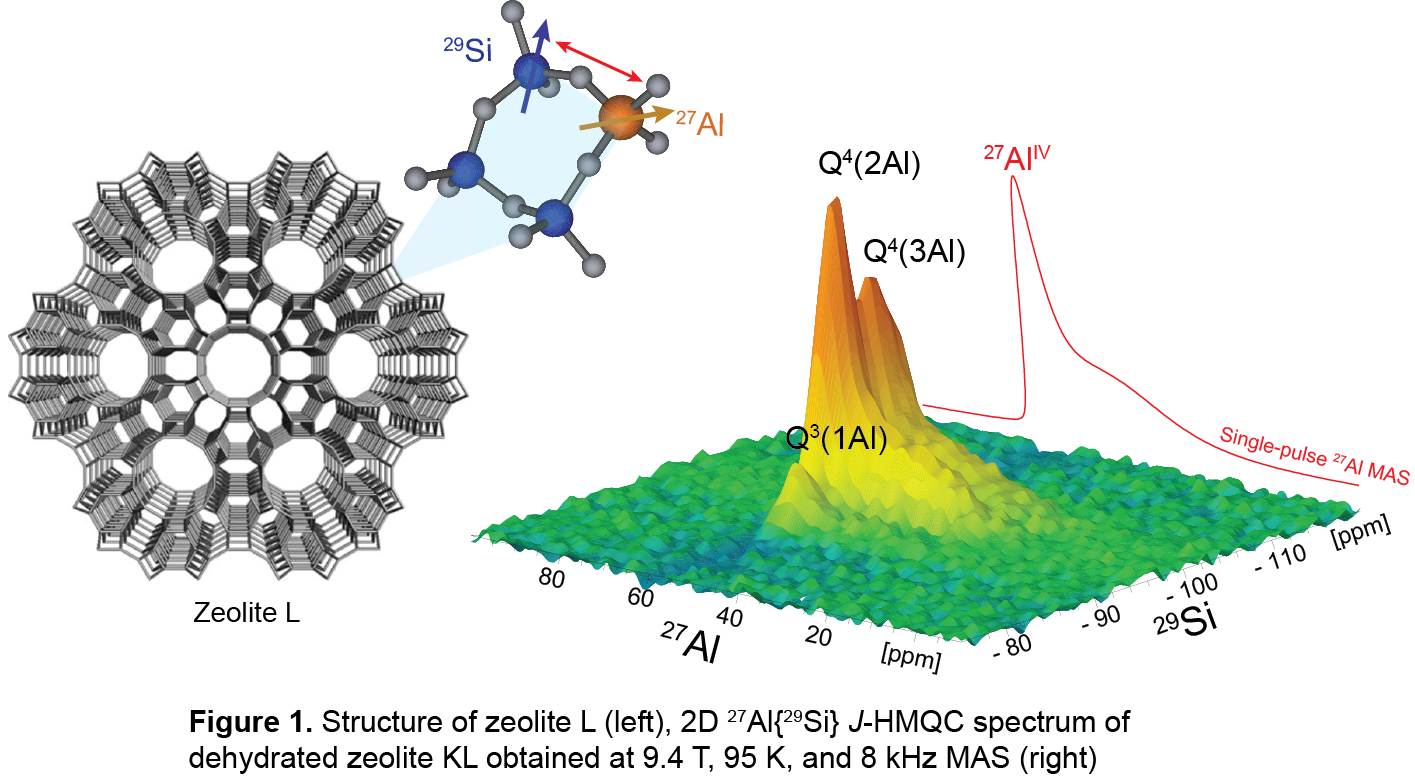

Zeolite-supported metals are widely used as heterogeneous catalysts for energy and environmental applications, and chemical syntheses. The reaction properties of these catalysts depend strongly on the compositions and nanoscale architectures of the zeolite support, as well as the types and locations of metal species within the zeolite pores. Understanding the atomic-scale structures of metal-zeolite systems is crucial for the development of strategies to tune metal active site distributions and thereby improve catalyst performance. Detailed fundamental studies of zeolite catalysts require characterization of chemical compositions, structures, and active sites. Such crucial information can be obtained by using various characterization techniques such as X-ray measurements, electron microscopy, infrared spectroscopy, and nuclear magnetic resonance techniques (NMR). Among these techniques, NMR spectroscopy is considered as one of the most powerful methods that can provide atomic-level structural information. Specifically, advancements in two-dimensional (2D) NMR provide high-resolution and unambiguous through-space or through-bond correlations of nuclei of interest. For example, 2D 27Al{29Si} NMR correlation spectra of Pt-KL zeolite catalysts enable distinct 29Si-O-27Al framework connectivities to be identified (Fig 1) and distinguished from the binder. Importantly, certain types of framework sites appear to be crucial to stabilizing Pt precursors within the zeolite nanopores. Furthermore, utilization of recent advancements of solid-state NMR techniques to improve sensitivities and resolutions, such as high-field (up to 35.2 T), fast magic-angle spinning (up to 55 kHz), and improved sensitivity of dynamic-nuclear polarization NMR (DNP NMR), enable opportunities to explore industrially significant zeolite catalysts in atomic-structural detail. These experimental approaches and techniques provide valuable information on structure-function relationships of zeolite supported metal catalysts for diverse applications, providing new insights to improve their macroscopic reaction properties.
References:
- F. Chmelka, Journal of Magnetic Resonance, 2019, 306, 91–97
- Battsengel, R. Meyer, A. W. Burton, R. T. Carr, P. M. Serna, M. Afeworki, B.F. Chmelka, to be submitted
Presenter(s)
Once the content has been viewed and you have attested to it, you will be able to download and print a certificate for PDH credits.
If you have already viewed this content,
please click here
to login.

